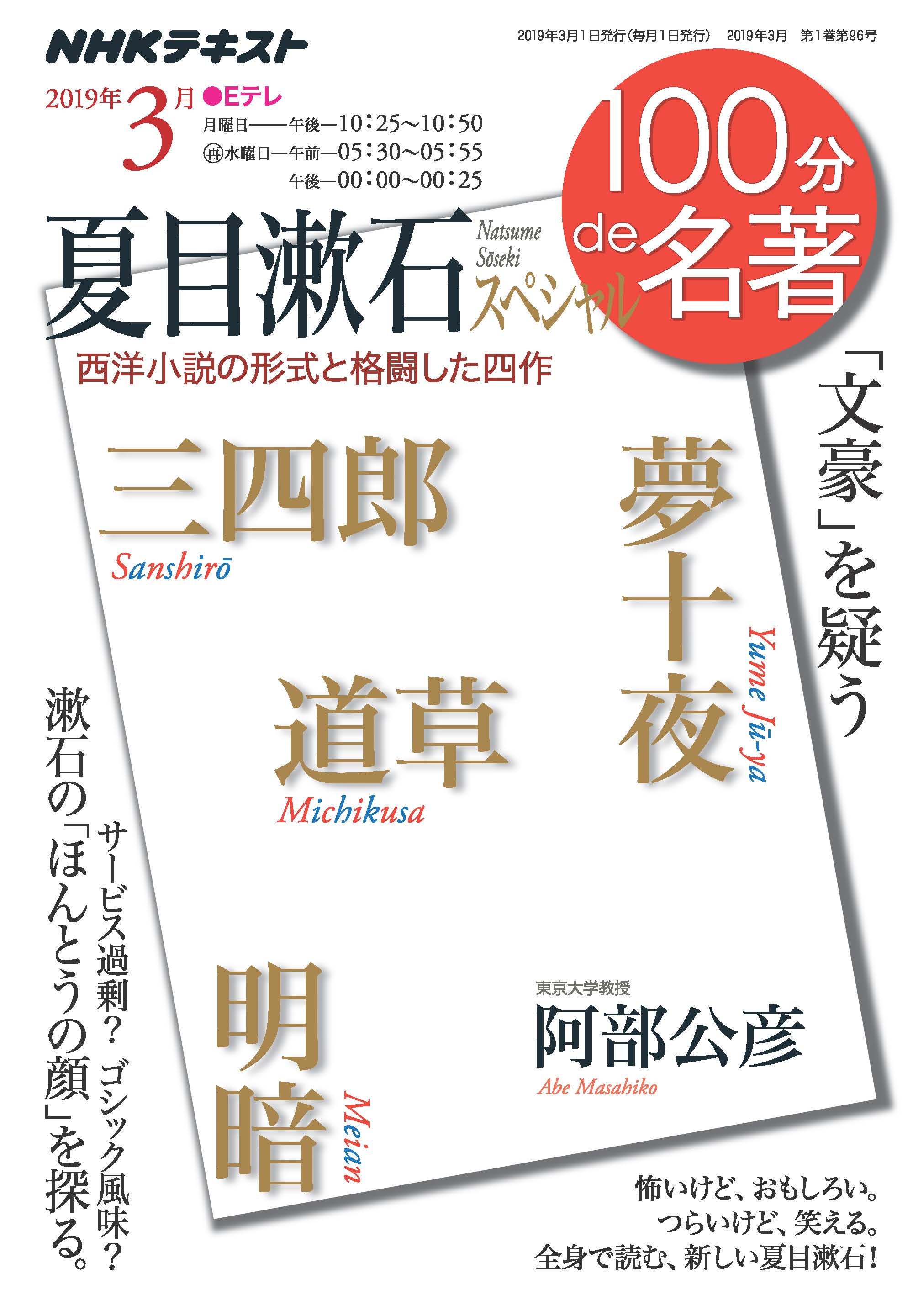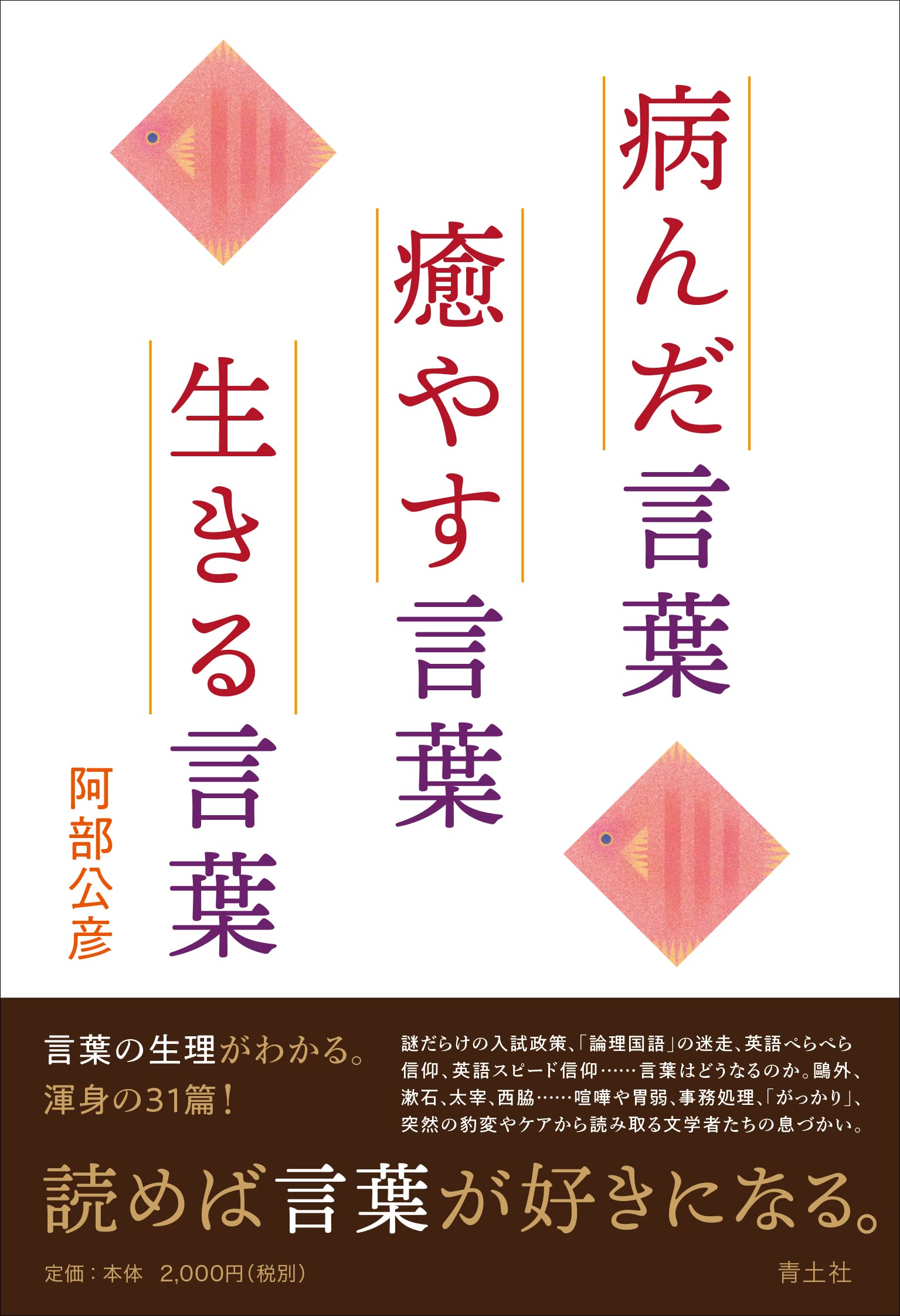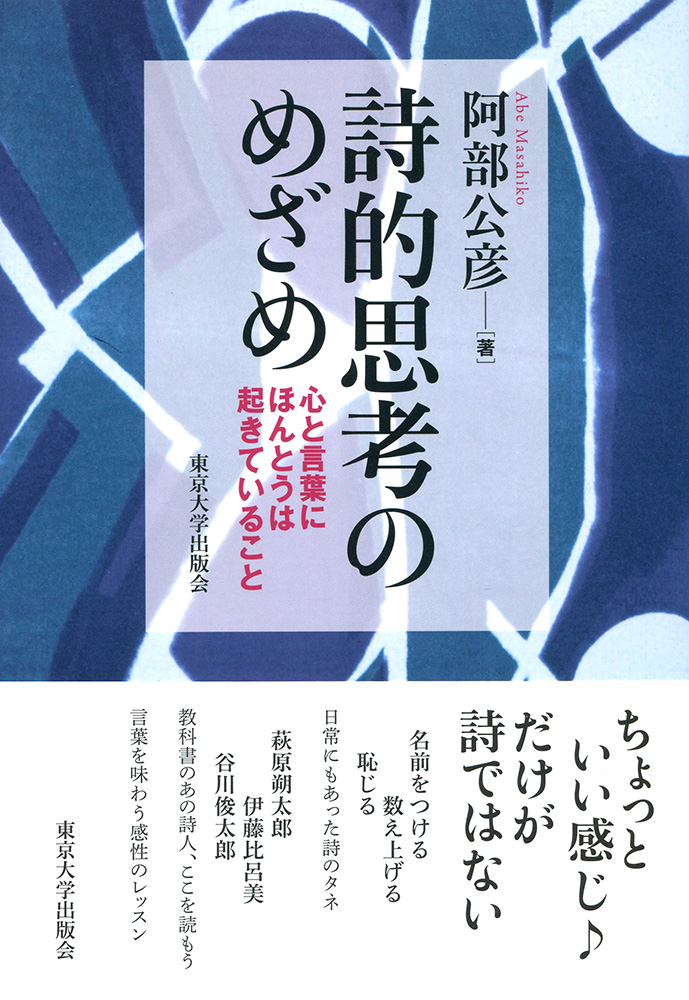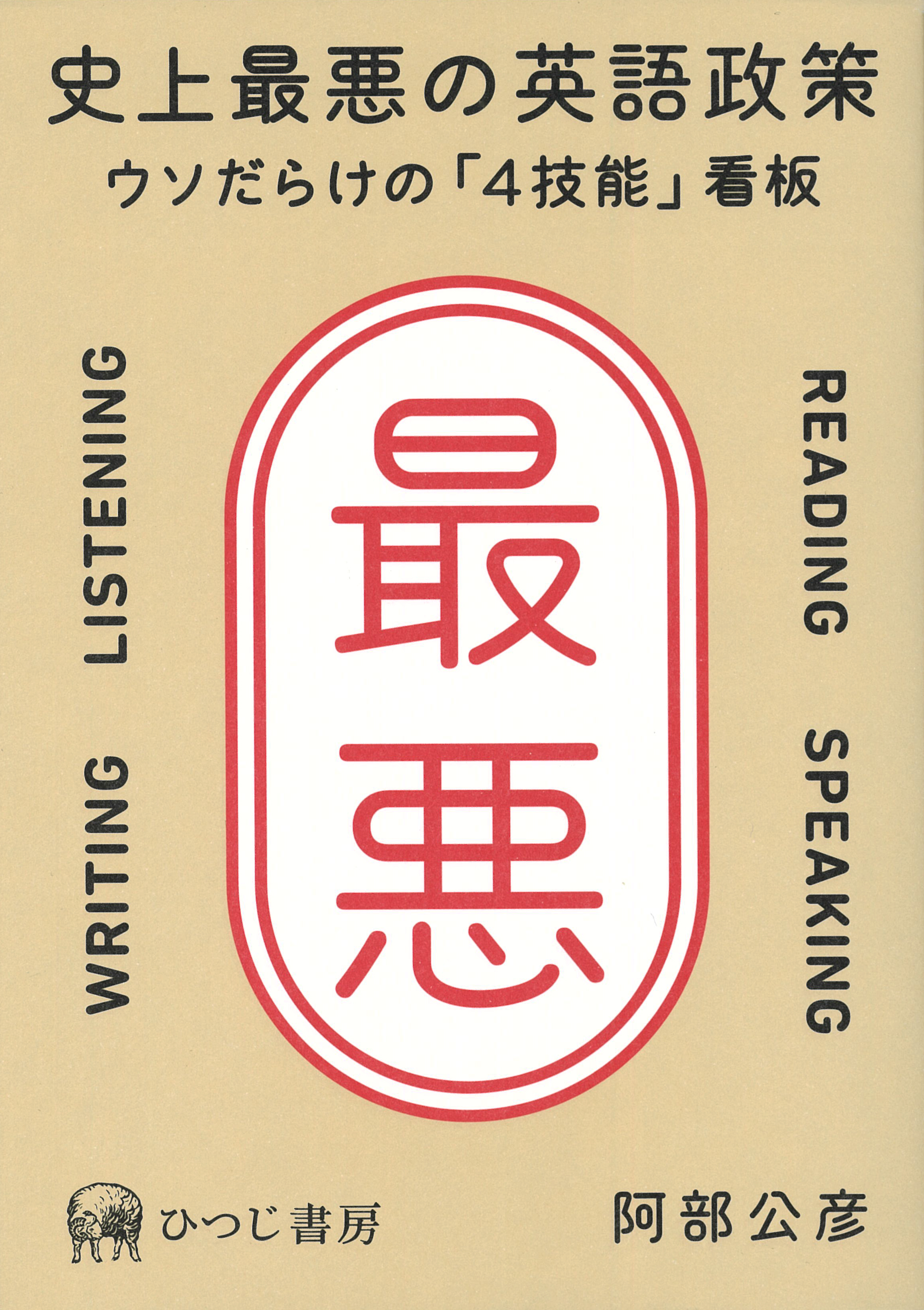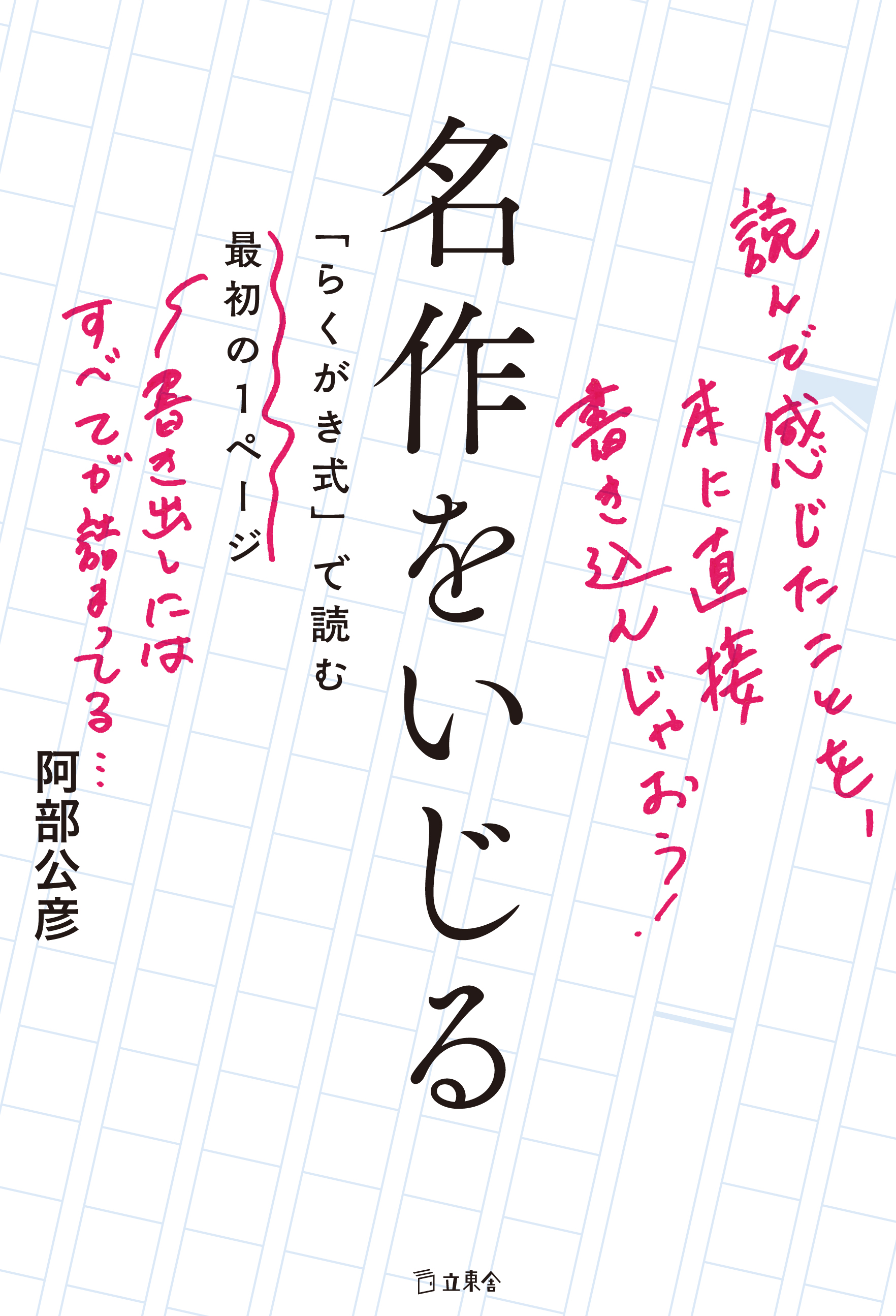
Title
Meisaku o ijiru (Tinkering with Masterpieces - Marking up the first page “scribble-style”)
Size
272 pages, 127x188mm
Language
Japanese
Released
September 15, 2017
ISBN
9784845630776
Published by
Rittor-sha
Book Info
See Book Availability at Library
Japanese Page
There are an increasing number of people who say they can’t read. The reasons given for this vary widely and include things like, “I’m too busy,” “I can’t concentrate for that long,” and “books aren’t interesting anyway.” Some people find this situation alarming.
But, is it really that bad? I, personally, believe that books are not only for reading. Books—and, more broadly, the written word—should be a freer place than that. The written word creates a strange magnetic field in which a lot of different things are happening. We don’t need to focus solely on the act of reading. It is okay to try different things.
What I want to recommend in this book is for the reader to try “tinkering” with the text. If you can’t read, then you should first try tinkering. And, then you can see what unfolds from there.
The word “tinker” brings to mind other words such as “touch,” “move,” and “connect with.” When reading, physically, you open the page. With your eyes, you see what is written there. This can affect you, cause you to think, ask questions, or criticize.
You might be thinking, “that seems like too much work.” You would be right. Everyone is busy as it is. It’s hard enough even to read a book. You couldn’t possibly do anything “beyond” reading.
But, in fact, the opposite is the case. It is because it is bothersome, because you are busy, that you should start by tinkering. People who don’t have time to read should try tinkering first. And, actually, it only needs to be the first page.
What I mean by “tinkering” here does not include things such as reading, appreciating, thinking about, or criticizing what is written that require effort. It’s something much simpler. It is something to do before starting to read. For starters, let’s try to forget that reading is bothersome or takes time and begin by doing what you can. “Tinkering” is the first step. In this book, I present examples of tinkering. The materials comprise Japanese novels that are considered “masterpieces.” They include works by authors such as Natsume Soseki, Dazai Osamu, and Shiga Naoya that you have likely seen excerpted in textbooks.
The process is simple. First, pick up a book. It can be a compilation borrowed from a library, small-format paperback, or even a digital book on your PC. However, it is better if you can write on it. If it’s a paperback that you’ve bought yourself, you are free to write as much as you like. If it is a book that you’ve borrowed, you will have to make a copy. If it is a digital book, you need to print it out. Samples are provided in this book, so please use these as well.
Now, it is time to revisit that masterpiece. Have a look at it. Really look at it intently.
What do you see? I’m willing to bet that the greater a “masterpiece” is, the stranger aura that it emits. There is a strange, weird vibe that will make you want to say, “What in the world is this?” I am absolutely certain that you will get a strange feeling. You will think, “Why is this happening? “What is happening?” Works that are called “masterpieces” have a different tone and are written in very unique Japanese. That is why this book focuses on novels.
Naturally, there may be some who don’t feel like going further when they experience, “What in the world is this?” They might think that it is too bothersome. But, even at that point, our goal is already half accomplished. You have already encountered the wonder, strangeness, and the bizarreness of a masterpiece.
But, I would encourage you to spend just a little more time with the work. The next step is to mark those odd passages with a pencil. You can use symbols such as an ○, △, or an ×, or you can underline the section, or point to it with an arrow. Write a note about what is odd about the passage, so you won’t forget. At the same time, write a short comment, even a word, such as “too insistent!” “I don’t get it!”, “Too dark!” Such comments are enough.
As I said before, start with just the first page. How many places did you mark? You might try comparing with someone else. It is likely that you will not have chosen the same places, although, on occasion, they might overlap. Just comparing how you’ve marked up the page might cause you to say, “oh, really?”—and make you naturally want to go on to the next step.
Included in this book are the beginning pages of 15 modern Japanese novels. Each beginning section is presented twice. The first is a sample for the reader to write in their own comments. The second has comments that I have added. If you are uncertain of what to do, you can see how I’ve tinkered with these masterpieces. Explanations of what I did are also included on the following page. There are also brief synopses of the novels. These are examples of how I responded to these works in my initial “tinkering.”
It is important that you do this on the first page of a novel. This is because the beginning section comprises a variety of things. It contains what could be called the “DNA structure” of the entire work. Just by reading this section, you could almost say, “I see. That’s how this novel is written” before actually reading the whole thing.
Each novel is written with a different set of rules. The function of emotions, the way language is used, the atmosphere, tone, topic…are all complexly interwoven to create a world that is unique to each work. That is why each work is something foreign, an alternative universe, to us. All of these rules are on display in the beginning section. We encounter the full strangeness and wonder of each work on the very first page. This is the real thrill of reading a novel.
In this book, I attempted to show what is happening, by focusing on the first page of masterpieces, where the reader and the narrator meet for the very first time, and through “tinkering.” This is, in a sense, a guide to encourage readers themselves to tinker with stories. It is not a set of instructions that must be strictly followed. What is presented are simply examples, suggestions. What I hope to communicate is the message that books— and, more broadly, the written word—are not only for reading, that there are many ways to relate to books, and that it is okay to play with books. I am confident that the reader will not be disappointed by this book.
(Written by ABE Masahiko, Professor, Graduate School of Humanities and Sociology / 2020)



 Find a book
Find a book


